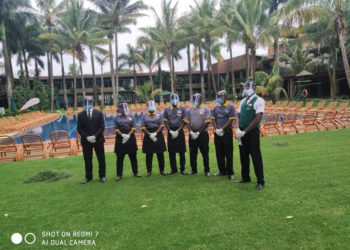Lake Mburo National Park is a compact gem, located conveniently close to the highway that connects Kampala to the parks of western Uganda. It is the smallest of Uganda’s savannah national parks and underlain by ancient Precambrian metamorphic rocks which date back more than 500 million years. It is home to 350 bird species as well as zebra, impala, eland, buffalo, oribi, Defassa waterbuck, leopard, hippo, hyena, topi and reedbuck.
Together with 13 other lakes in the area, Lake Mburo forms part of a 50km-long wetland system linked by a swamp. Five of these lakes lie within the park’s borders. Once covered by open savanna, Lake Mburo National Park now contains much woodland as there are no elephants to tame the vegetation. In the western part of the park, the savanna is interspersed with rocky ridges and forested gorges while patches of papyrus swamp and narrow bands of lush riparian woodland line many lakes.
Lake Mburo was originally gazetted in 1933 as a Controlled Hunting Area and upgraded to a Game Reserve in 1963. The Banyankole Bahima residents continued to graze their cattle in the Reserve until it was upgraded to National Park status in 1983. The Obote government’s decision to upgrade the Park was reportedly in part intended to weaken the Banyankole, who supported anti-Obote rebels. As the evicted pastoralists were not compensated for lost grazing land or assisted with resettling, many remained hostile to the Park’s formation. The rangeland outside the park was subsequently subdivided into small ranges and subsistence farming plots.
In 1985 the second Obote regime fell and the previous residents of Lake Mburo re-occupied the Park’s land, expelling park staff, destroying infrastructure and annihilating wildlife. Less than half of the Park’s original land area was eventually re-gazetted by the NRM government in 1986.
Do you have a story in your community or an opinion to share with us: Email us at editorial@watchdoguganda.com











